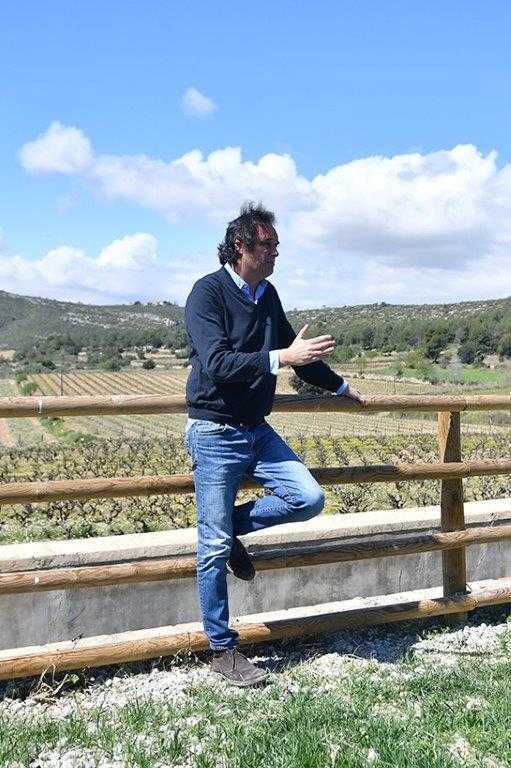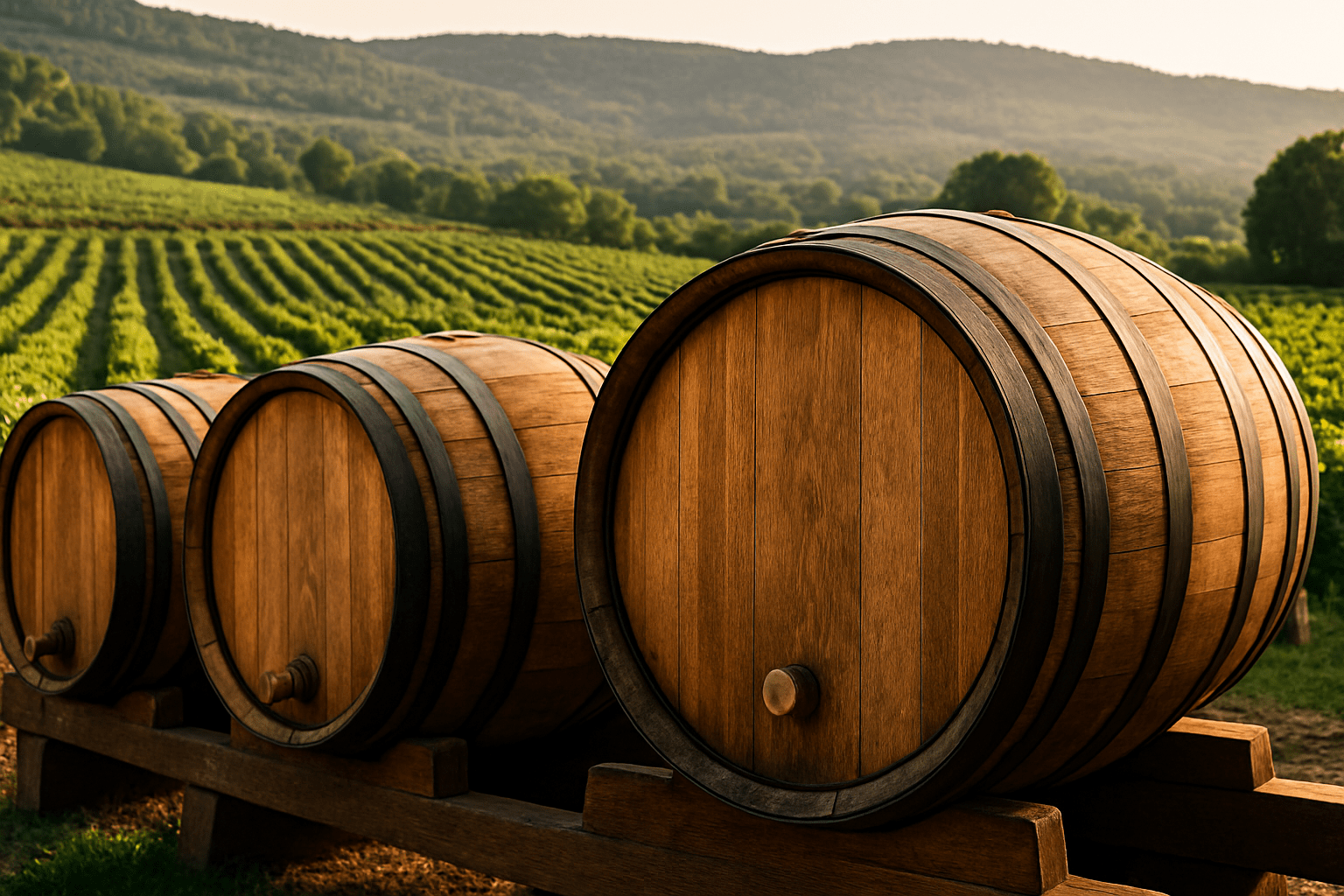Wine maceration is the pivotal stage where grape skins, seeds – and sometimes even stems – immerse in freshly pressed must, surrendering their pigments, aromas and tannins. Mastering it is mastering the invisible bridge between vineyard and glass. At Viladellops we treat maceration as an ancient craft: modern technology brings precision, but never replaces the winemaker’s intuition or the experience you can live in our wine tastings in Barcelona.
This guide unpacks every nuance of the process and shows how seemingly small decisions – temperature, timing, vessel choice – ultimately shape the wine you taste. Get ready for a complete journey from vine to final sip.
All about Wine Maceration:
What Exactly Is Wine Maceration?
Defining the Concept: More Than Just Color
To macerate is to keep grape skins, seeds and occasionally stems in contact with the juice. During this window anthocyanins, polyphenols and aromatic precursors slowly migrate, tinting, perfuming and structuring the future wine. It is not simply “coloring a liquid”; it is forging character at its core.
At the cellular level the skin swells, membranes loosen and compounds diffuse. Final concentration hinges on temperature, pH and the presence of alcohol. Thin‑skinned varieties like Grenache give up color quickly; thicker grapes such as Carignan need more time or slightly higher temperatures.
The Key Players: Skins, Seeds and Must in Contact
Skins carry pigment and floral terpenes; seeds are rich in firmer tannins and seed oils. Must is both solvent and highway. Balancing the solid‑to‑liquid ratio is crucial: when the “cap” exceeds roughly 25 % of total volume extraction surges – but so does the risk of harshness.
At Viladellops we tweak that balance every vintage. In warm years we lower the skin‑to‑juice ratio to avoid over‑ripe heaviness; in cool years we raise it to build structure. The result is fruit energy married to elegance.
Wine Maceration vs. Fermentation: Clearing Up the Confusion
The two often overlap, yet they are not identical. Fermentation turns sugar into alcohol via yeast; maceration is the extraction phase. They can coincide (alcoholic maceration) or be separated as a cold soak before fermentation or an extended maceration after it. Splitting them allows surgical control: cold soaking captures delicate aromatics without tough tannin, while overlapping lets newborn alcohol dissolve color and flavor more efficiently. Choosing the path defines the wine’s personality.
Why Macerate? The Three Pillars of Red Wine
Extracting Color: Anthocyanins in the Skin
Natural pigments move into the must, creating hues from vibrant purple to deep garnet. A brief maceration yields rosés or light‑colored reds; an extended one produces high color depth and inky tones. The key is locking color without oxidation, so we ferment at 61‑82 °F (16‑28 °C) and use closed pump‑overs to limit air. Concrete vats help buffer temperature swings that could bleach the wine.
Building Aroma: Unlocking Flavor Precursors
Initially odorless molecules release and transform during fermentation, giving notes of red berry, violet or Mediterranean herbs. Longer macerations add sweet spice and cocoa as more complex polyphenols enter solution. Cooler temps under 68 °F preserve fresh‑fruit esters; above 77 °F jammy and spicy characters emerge. Gentle oxygen from pump‑overs encourages the synthesis of layered aromas.
Crafting Structure: The Role of Tannins
Tannins supply body, grip and aging potential. With slow oxidation they soften into that coveted velvety texture. Source matters: skin tannins taste round, seed tannins feel firm. By modulating heat and time we coax only the ripe, polymerized fraction from the seed, steering clear of dryness. The payoff is a firm yet caressing frame.
The Process and Core Techniques: How Wine Is Macerated
The Cap: What It Is and Why It Matters
CO₂ pushes skins upward into a floating “cap.” Left dry it oxidizes and invites spoilage microbes, so keeping it moist is non‑negotiable. Stainless tanks fitted with pressure sensors alert us when the cap compacts; if tension climbs, we schedule a punch‑down to break it up and even out extraction.
Pump‑Overs: Showering the Cap for Gentle Extraction
We pump juice from the bottom over the top, equalizing temperature and adding a micro dose of oxygen. Vigorous pump‑overs early on pull vivid color; shorter, slower cycles near the end keep tannins from turning rough. Flow rate counts: at 6 L/min we generate fine oxygen bubbles for complexity; at 2 L/min we simply wet the cap to safeguard fresh fruit.
Punch‑Downs: Manual Intensity with a Human Touch
A tool – wood, stainless or even barefoot in tiny fermenters – pushes the cap down into the juice. It grants delicate yet thorough extraction, perfect for small concrete vats. Hands‑on contact lets the winemaker feel heat and density, fine‑tuning frequency in real time.
Délestage (Rack and Return): Deep, Selective Extraction
We drain all the juice, let the cap collapse, then return the wine from above. The move polishes tannins and clarifies the must simultaneously. In vintages with ultra‑ripe seeds we rely on délestage: rapid aeration locks in color and drops coarse lees, delivering satin‑smooth texture without losing tension.
Exploring the Main Types of Maceration
Cold Soaking (Pre‑Ferment Maceration)
Carried out at 41‑50 °F (5‑10 °C) for 24‑72 hours before fermentation starts, cold soaking extracts vivid color and delicate aromatics while keeping tannins in check. Wines show fresh fruit, floral notes and silky texture – ideal for youthful reds.
Sensory profile: bright ruby color, cherry and violet aromas, soft tannins.
Food pairing: Iberico ham tapas, tuna sushi, mild cheeses.
Traditional (Alcoholic) Maceration
The classic path: fermentation and maceration run together at 75‑82 °F (24‑28 °C) for 5‑15 days depending on grape and style. It naturally balances color, aroma and tannin.
Sensory profile: ripe red fruit, gentle spice, medium tannin and length.
Food pairing: roast chicken, Bolognese pasta, semi‑cured cheeses.
Carbonic Maceration: The Fruit‑Forward Method
Whole clusters rest in a sealed tank filled with CO₂. Fermentation begins inside each berry over 7‑10 days. Resulting wines explode with strawberry and banana, carry a light spritz and ultra‑soft tannins – perfect for early drinking,
Sensory profile: juicy red berries, hint of bubble, barely any tannin.
Food pairing: charcuterie, street‑food noodles, light pizza.
Extended Maceration (Post‑Ferment)
After fermentation finishes, wine remains on skins 10‑30 days longer. Tannins polymerize, adding roundness and longevity. It underpins our single‑parcel reds destined for long aging.
Sensory profile: deep color, cocoa and tobacco notes, firm structure, lengthy finish.
Food pairing: roast lamb, game stew, aged cheeses.
Wine Maceration by Style
Red Wines: The Golden Rule
Color depth and structure hinge almost entirely on maceration time and temperature. A fruity young red may soak 4‑6 days; an age‑worthy cuvée 20 days or more. Some producers macerate in open oak barrels, whose curved staves expand surface area and supply early micro‑oxygenation, taming tannins from day one.
White Wines: Skin Contact and the Rise of Orange Wine
For whites winess maceration, skin contact (pellicular maceration) is usually limited to a few hours to build tropical aromas and mid‑palate weight. Let it run for days and ferment on skins, and you get orange wines: amber hue, fine tannin, oxidative complexity. Vessel choice steers the style – stainless steel for purity, clay amphorae for micro‑porosity and texture.
Rosé Secrets: Short, Precise Contact
Rosé needs only 2‑12 hours of red‑skin contact to achieve shades from pale blush to salmon. Overshoot and bitterness creeps in, so we track density and taste constantly. A gentle pneumatic press pulls soft pigments without coarse tannin, delivering an elegant rosé ideal for light fare.
Frequently Asked Questions About Wine Maceration
How Long Does Maceration Last?
- Rosé: 2‑12 hours
- White skin contact: 6‑12 hours
- Young reds: 4‑10 days
- Age‑worthy reds: up to 30 days
- Carbonic maceration: 7‑10 days inside the berry
Does a Longer Maceration Mean Better Wine?
Not automatically. Longer soaks extract more tannin and can unbalance a wine if grapes lack full maturity. Quality lies in finding the sweet spot between concentration and finesse. In rainy harvests a shorter soak prevents unripe green tannins.
What Is Saignée and How Is It Linked to Maceration?
Saignée (“bleeding”) removes a portion of juice early in maceration to concentrate the remaining must. The run‑off juice becomes delicately colored rosé. By raising the skin‑to‑juice ratio, saignée intensifies the color and body of the red still fermenting.
Wine maceration is the thread that turns grapes into a spectrum of colors, aromas and textures. It demands technique, instinct and profound respect for the fruit. At Viladellops we fine‑tune every variable – from vessel choice to the final punch‑down – so that when you pull our cork, you taste the truest expression of our land.
Experience how carbonic maceration amplifies fruit or how an extended soak builds longevity: explore our wine collection and find your next favorite bottle.

Responsible for Finca Viladellops, Marcelo represents the new generation of a family dedicated to interpreting the Garraf landscape through organic and honest wines. His work focuses on respect for the land and the pure expression of native varieties.


